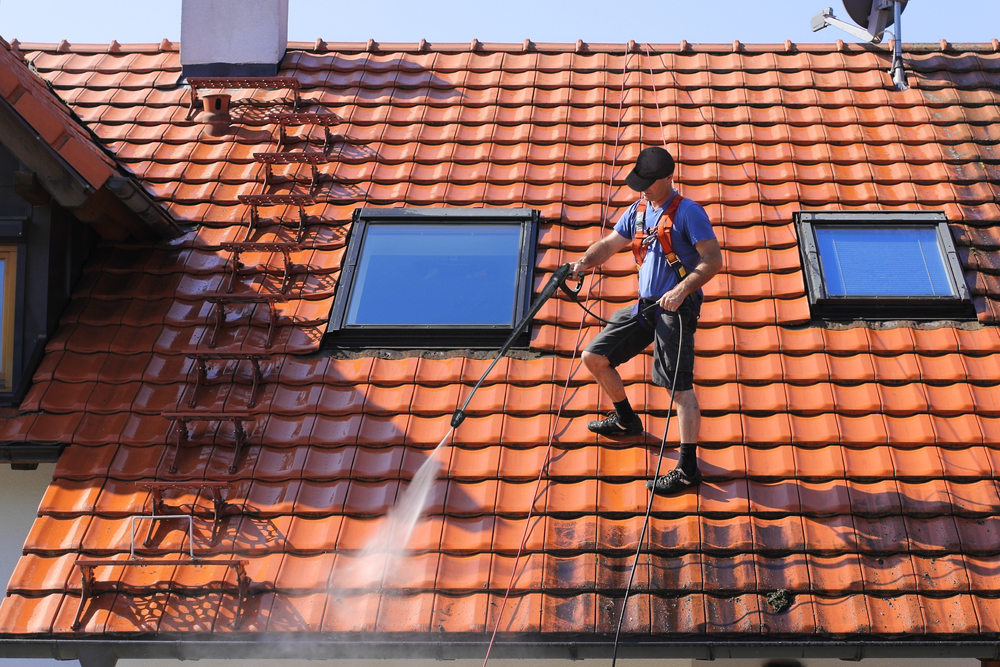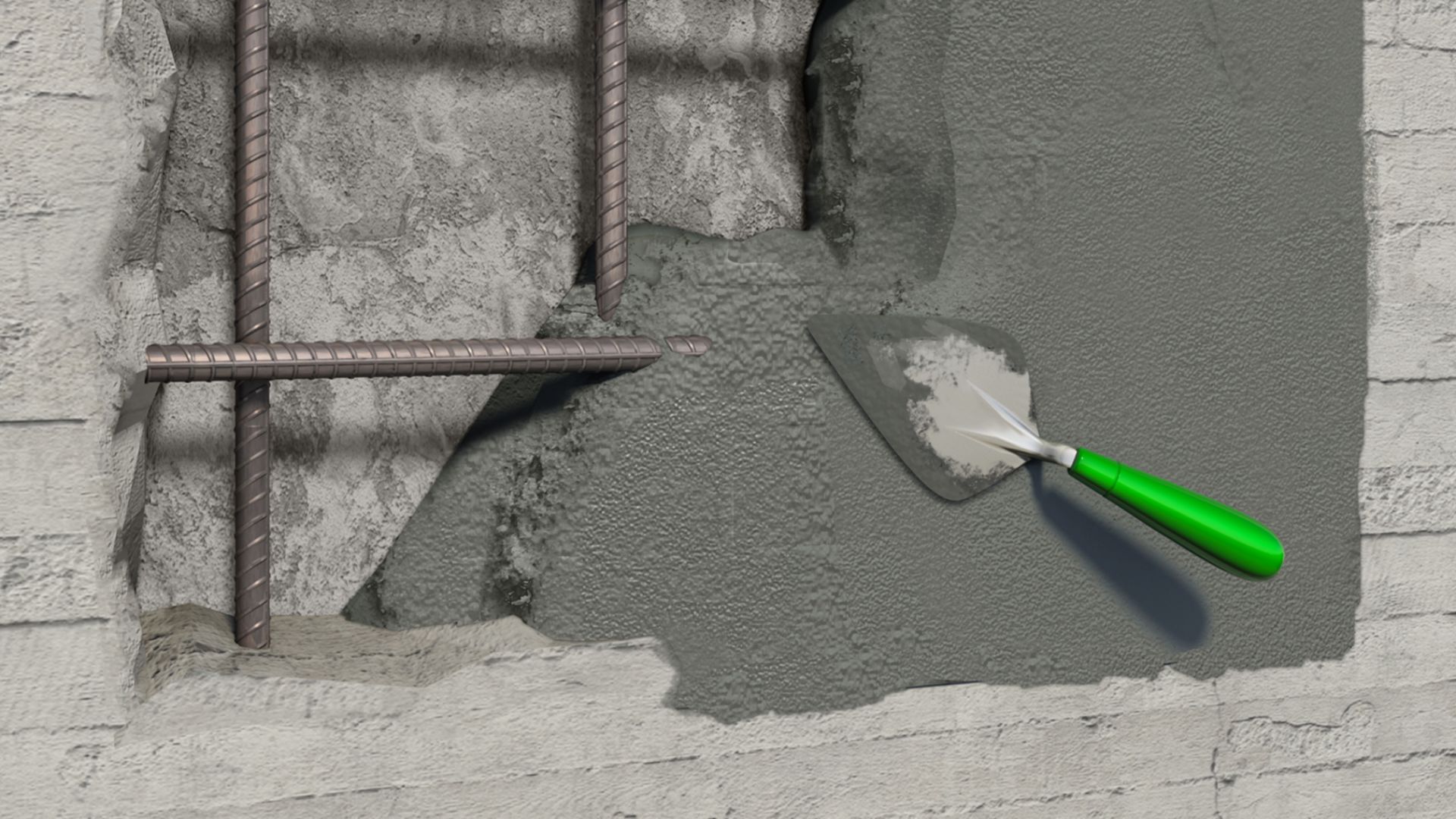Roof cleaning involves removing algae, mold, mildew, lichen and moss from roofs and reducing oxidation on metal roofs. It can be done using power washing, chemical treatments or manual scrubbing.
Generally, homeowners should choose an eco-friendly cleaner. These cleaners are safe for children, plants and wildlife. Moreover, they don’t harm the shingles or soil. For more information, click the Sea Clear Window Washing & Pressure Cleaning LLC to proceed.

If you want to get your roof cleaned, but don’t want to harm the environment, several eco-friendly options are available. These cleaning products are biodegradable and non-toxic, so they won’t damage plants, animals, or water supplies. They also use low-pressure washing techniques, so they won’t damage your roof’s surface. These cleaners are also effective at removing moss and algae.
Another way to keep your roof clean while protecting the environment is to hire a professional cleaning company. A good professional will have access to specialized equipment and chemicals that are not easily accessible to homeowners. In addition, they will use gentle manual cleaning methods that are less likely to cause damage to the roof or surrounding vegetation. For example, they will spray the roof with a low-pressure hose or sprayer to remove debris and dirt buildup.
In addition, they will also ensure that rainwater runoff from the roof is properly directed to avoid clogging the gutters and causing environmental contamination. Rainwater runoff can contain toxins and other contaminants from the roof, so it is important to manage it effectively.
Roof fungus cleaners such as SH are eco-friendly because they oxidize the organic roof mildew and kill the spores without harming trees, plants, animals, gutters, or siding. They are also safer than chlorine bleaching chemicals, which leave contaminating residues in the environment.
Regular roof maintenance is vital to protect the health of your home and extend its lifespan. It is also a great way to prevent expensive repairs and reduce waste. Choosing eco-friendly cleaning products and using soft brushing methods to remove moss and algae will help protect the environment while keeping your roof in excellent condition.
In addition to reducing waste and pollution, eco-friendly roof cleaning methods will help reduce the risk of leaks and rot. The most common problems with old and dirty roofs are leaking gutters, deteriorating shingles, and mold or mildew growth. Eco-friendly cleaners will also protect the environment by reducing the amount of pollutants in the air. In addition, they will increase your property value by extending the life of your roof.
Bleach-based cleaners are very effective on many types of grime and stains. They work well to remove moss, mildew, and mold growth as well as black streaks. They are also ideal for cleaning metal roofs, but care must be taken to avoid overdoing it and damaging the surface. A solution of one part bleach to eight parts water should be applied with a soft brush or cloth and left to sit for five minutes before being rinsed. This can also be done using a pressure washer, but it is best to use a lower setting to prevent damage.
Before using any type of cleaner on your roof, it is important to protect any foundation plantings or shingles that are near the area. The bleach mixture will run down and can stain plants and grass, as well as any other items that it comes into contact with. To protect the plants and grass, wet them down before applying the bleach mixture to the roof.
You should also use a garden sprayer that is designed to handle chemicals and a non-corrosive chemical like chlorine bleach to apply the cleaner. It is also a good idea to apply this solution on a cloudy day, as strong sunlight can dry the bleach before it has a chance to saturate the roof.
Some homeowners find that they can eliminate moss, mildew, and algae stains by using a combination of bleach and detergent. This solution is not as corrosive as bleach, and it can be used to clean asphalt shingle roofs. You should also avoid using lye based cleaners, as these can be toxic to plants, animals, and people.
Using a bleach and detergent solution on your roof can help to reduce the buildup of dirt, mold, and fungus, as well as dissolving grease stains. However, rinsing is often not enough to completely remove the buildup and residue from your roof.
Beach-based cleaners are an environmentally friendly alternative to bleach. They are a great choice for use on roofs and do not harm plants or animals. They are also great for removing lichen, mildew and moss growth, as well as oxidation from metal roofs. This process will also extend the life of your roof and save you money in the long run.
Many beach-based cleaners contain bleach, but some are also made with other cleaning agents. These chemicals may cause a variety of problems, including respiratory irritation and eye damage. It is recommended that you wear safety goggles, gloves and a mask when using these products.
Beach cleanup is an important leisure activity that contributes to community wellbeing and environmental quality. It is an attractive way for people to participate in social and recreational activities and promotes a positive image of the local tourism product. However, its impacts are far from straightforward and require further academic research to assess (Elkington & Stebbins, 2014).
It is important for researchers to recognize the multiple motivations for participation in beach cleaning. They include social and individualistic reasons for joining a beach cleaning group, as well as the desire to demonstrate pro-environmental behaviour. Moreover, beach cleaning can have an impact on tourism products in terms of encouraging people to visit beaches with a high level of ecological conservation.
While the majority of beach-based cleaners are not formulated to be safe for roofs, there are some that are. These cleaners are available for purchase at most hardware stores and are easy to use. They work by dissolving stains and cleaning them. However, it is essential to read the instructions on the bottle before using them.
Another option is to use a biodegradable, surface-clinging cleaner that will lift stains over time. The best biodegradable cleaners are those that contain phosphates and phosphoric acids, which do not affect the environment. These cleaners can be purchased online and are usually very affordable.
Chemical-based cleaners can be used on your roof to remove dirt, mildew, mold, moss and other organic growth. They’re especially effective at removing organisms that can damage your roof and shorten its lifespan. These cleaning solutions often include sodium hypochlorite (bleach) or sodium hydroxide, in combination with a surfactant to help the solution adhere and penetrate the surface of the roof. They are also very effective at removing stains.
Some people may be worried about using a chemical-based cleaner on their roof, but it is actually quite safe. The key is to always follow the instructions provided by the manufacturer. Some of these products are highly caustic, so they need to be used with care. It’s also important to note that not all chemicals are compatible with all roofing materials. Some chemical-based cleaners can damage less resilient roofing materials, such as vinyl or rubber membranes.
Unlike other cleaning methods such as power washing and brushing, which can damage the granular surface of asphalt shingles, chemical roof cleaning uses a low-pressure water spray with specialized cleaning solutions. The chemicals are typically sprayed on the entire roof and allowed to soak in for 20-30 minutes. A soft brush or cloth can then be used to scrub at any set-in stains.
If the chemicals are not rinsed properly, they can leave behind a white haze that cannot be rinsed away. If this happens, the roof should be treated again with a different cleaning solution. Potassium hydroxide is a good alternative to sodium hypochlorite. It has the same effect on a roof, but it is easier to transport and handle.
Another great option for chemical roof cleaning is sodium percarbonate. This oxygen-based chemical doesn’t need to be rinsed off because it becomes inactive when it comes into contact with water. Licensed roof cleaning contractors that specialize in soft washing typically use this product because it’s environmentally friendly. It’s important to talk with these professionals before hiring them for a job, as they will be the best ones to advise you on what type of cleaner will work best for your specific roof.

